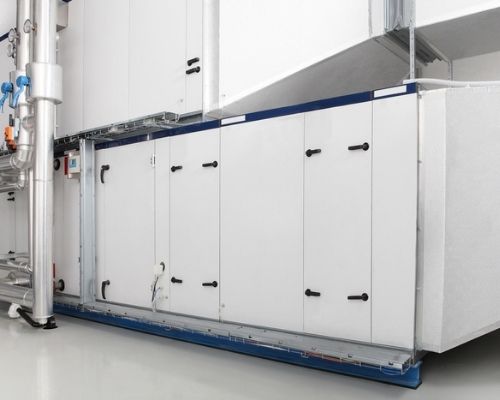

Industrial workspaces carry significant risk for accumulating moisture that can wreak havoc on the interior structure, machinery, and inventory. Also, the accumulation of humidity inside manufacturing plants and working environments can affect employee morale and performance.
Once you find out that the moisture accumulation has compromised your warehouse or industrial space, you will want to remedy the situation immediately.
Cracked windows, door gaps, and other openings where warm air can enter are the biggest culprits for humidity and moisture issues inside industrial spaces. In addition, humidity is typically worse at night when surface materials such as floors, ceilings, and machinery reach their dew point when the warm air cools, leading to moisture accumulation.
Rust, rot, and sweating concrete floors can occur, causing significant safety compliance issues and financial responsibility on businesses and their employees.
Industrial dehumidifiers can significantly reduce the problem of humidity and moisture, producing supplemental airflow throughout factories and warehouses during the day and night when moisture becomes an issue.
Before making any decision, consider these factors when selecting your industrial Dehumidifier:
Cubic footage and the ceiling height factor into the recommended unit, and how many of them are needed.
Consider how high the relative humidity can increase during the summer and how often bay doors are opened for shipments.
Other factors that play into decisions include their ideal relative humidity for employees and inventory, how tight the structure is sealed, how many employees are in there.
Commercial desiccant dehumidifiers and compressor dehumidifiers both work well at removing humidity, depending on your specific conditions. For businesses that need the relative humidity to be below 42%, or significant dehumidification needs to be accomplished below 60˚ degrees Fahrenheit, a desiccant dehumidifier is recommended.
Desiccant dehumidifiers work slightly differently from their refrigerant counterparts. They use an absorbent gel and desiccant wheel to take moisture from the air. The adsorbent gel is gently rotated on the desiccant wheel, gradually turning while the gel is warmed by reactivated heat, dumping the humidity into a water tank or reservoir. The benefits are:
Controlling humidity in industrial workspaces can seem challenging because these areas not as insulated as residential areas. A powerful dehumidifier can help you avoid high humidity issues that are not easy to resolve.
If you are still unsure, you may want to speak to an expert at Dry Air Services and discuss your options. Check out our website to gain more insight into our whole line of dehumidifiers.